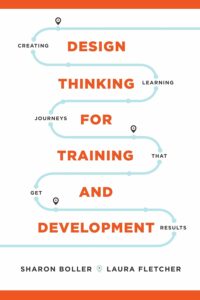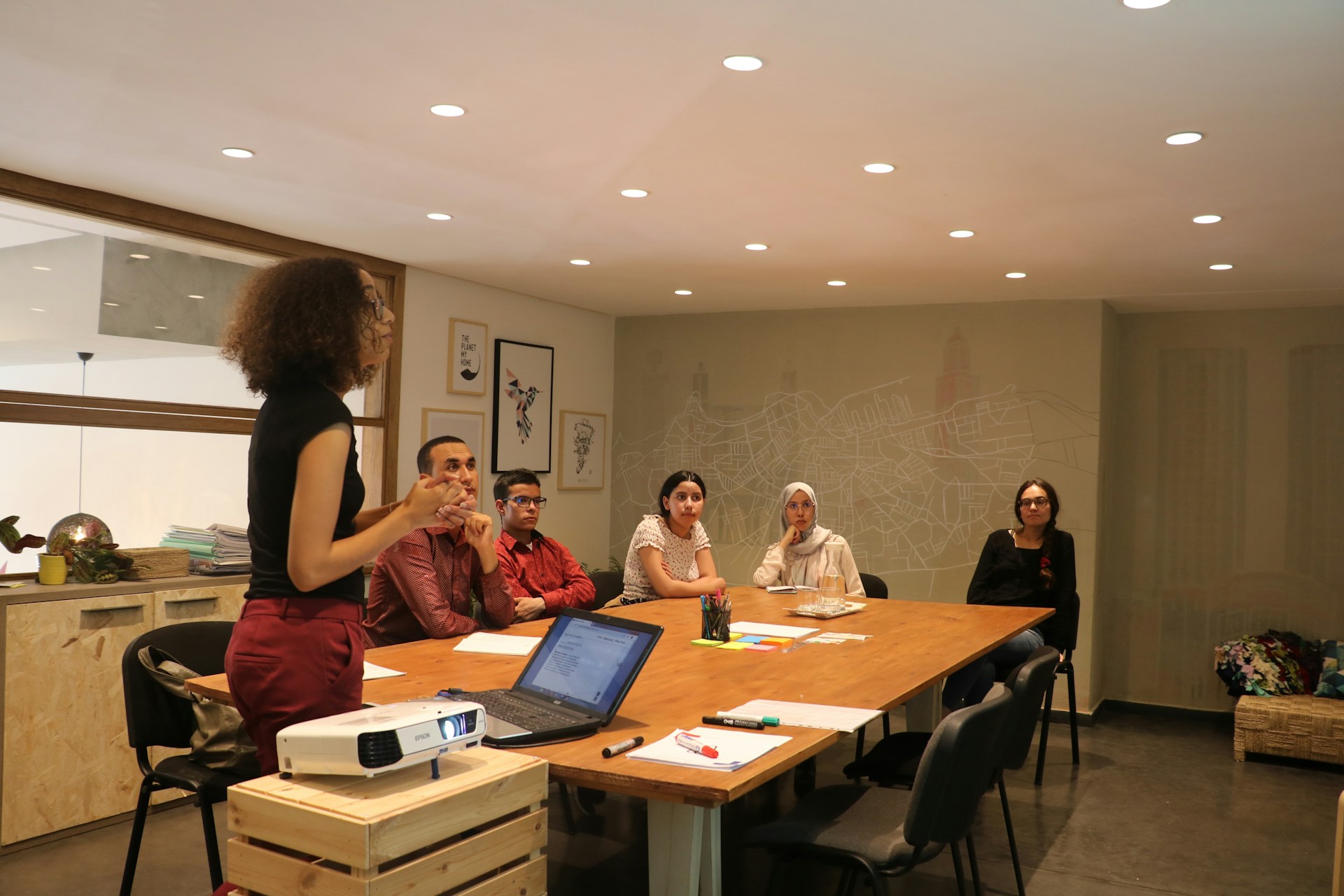Learn more about design thinking applications for training, learning, and development
To remain competitive in today’s changing landscape, organizations must continuously learn and help their employees to learn. The same goes for schools and educational institutions responding to change. Effective training and development programs not only help onboard new employees, but can ensure that existing team members have the resources, knowledge, and skills they need to succeed. Enter design thinking – a powerful framework that is revolutionizing the way we approach learning and development.
 In their book, “Design Thinking for Training and Development,” Sharon Boller and Laura Fletcher delve into the intersection of design thinking and learning, offering a comprehensive guide for organizations seeking to elevate their training initiatives.
In their book, “Design Thinking for Training and Development,” Sharon Boller and Laura Fletcher delve into the intersection of design thinking and learning, offering a comprehensive guide for organizations seeking to elevate their training initiatives.
Here is the description of the book from Amazon:
Better Learning Solutions Through Better Learning Experiences
When training and development initiatives treat learning as something that occurs as a one-time event, the learner and the business suffer. Using design thinking can help talent development professionals ensure learning sticks to drive improved performance.
Design Thinking for Training and Development offers a primer on design thinking, a human-centered process and problem-solving methodology that focuses on involving users of a solution in its design. For effective design thinking, talent development professionals need to go beyond the UX, the user experience, and incorporate the LX, the learner experience.
In this how-to guide for applying design thinking tools and techniques, Sharon Boller and Laura Fletcher share how they adapted the traditional design thinking process for training and development projects. Their process involves steps to:
- Get perspective.
- Refine the problem.
- Ideate and prototype.
- Iterate (develop, test, pilot, and refine).
- Implement.Design thinking is about balancing the three forces on training and development programs: learner wants and needs, business needs, and constraints. Learn how to get buy-in from skeptical stakeholders. Discover why taking requests for training, gathering the perspective of stakeholders and learners, and crafting problem statements will uncover the true issue at hand.Two in-depth case studies show how the authors made design thinking work. Job aids and tools featured in this book include:
- a strategy blueprint to uncover what a stakeholder is trying to solve
- an empathy map to capture the learner’s thoughts, actions, motivators, and challenges
- an experience map to better understand how the learner performs.
With its hands-on, use-it-today approach, this book will get you started on your own journey to applying design thinking.
At its core, design thinking is a human-centered approach to problem-solving, emphasizing empathy, creativity, and iteration. By applying this methodology to training and development, companies can cultivate a culture of innovation and empower their employees to thrive in an increasingly complex world.
One of the key principles of design thinking is empathy – the ability to understand the needs and experiences of others. When designing training programs, it’s essential to put oneself in the shoes of the learners, gaining insights into their challenges, motivations, and learning preferences. By adopting a learner-centric approach, organizations can tailor their training initiatives to address specific needs, resulting in higher engagement and retention rates.
Another fundamental aspect of design thinking is ideation – the generation of creative solutions to complex problems. Rather than relying on traditional training methods, which often involve passive learning experiences, design thinking encourages experimentation and innovation. From interactive simulations to gamified activities, there are countless ways to make learning more engaging and memorable. By embracing a culture of experimentation, organizations can foster a spirit of creativity and curiosity among their employees, driving continuous improvement and growth.
In addition to the insights in the book offered by Boller and Fletcher, there are numerous other resources available for those interested in exploring the intersection of design thinking and training and development. Books, online learning platforms, and custom workshops are valuable ways to learn more about design thinking and its practical application in training and development.
Learn more about design thinking for training and development
Design thinking holds immense potential for revolutionizing training and development practices, enabling organizations to create engaging and impactful learning experiences that drive performance and innovation. By embracing the principles of empathy, ideation, and experimentation, companies can unlock the full potential of their workforce and stay ahead of the curve in an increasingly competitive landscape. So, let’s embark on this journey of exploration and discovery, harnessing the power of design thinking to unleash creativity and drive meaningful change. Contact us today to learn how we can help you apply design thinking in training principles to your own organizational training programs.
Want to dive deeper? Learn about other design thinking books as well as design thinking training, workshops and courses.
